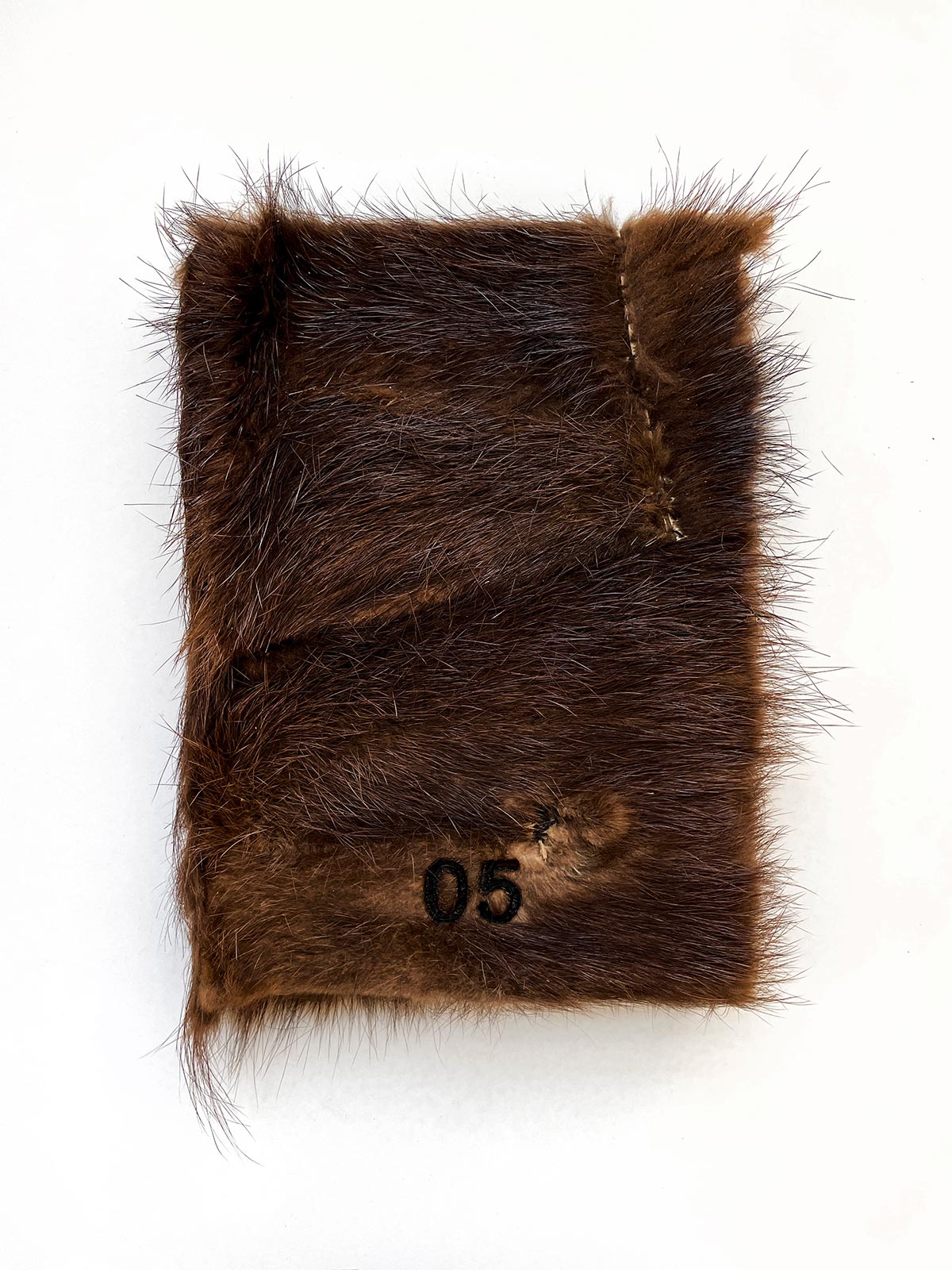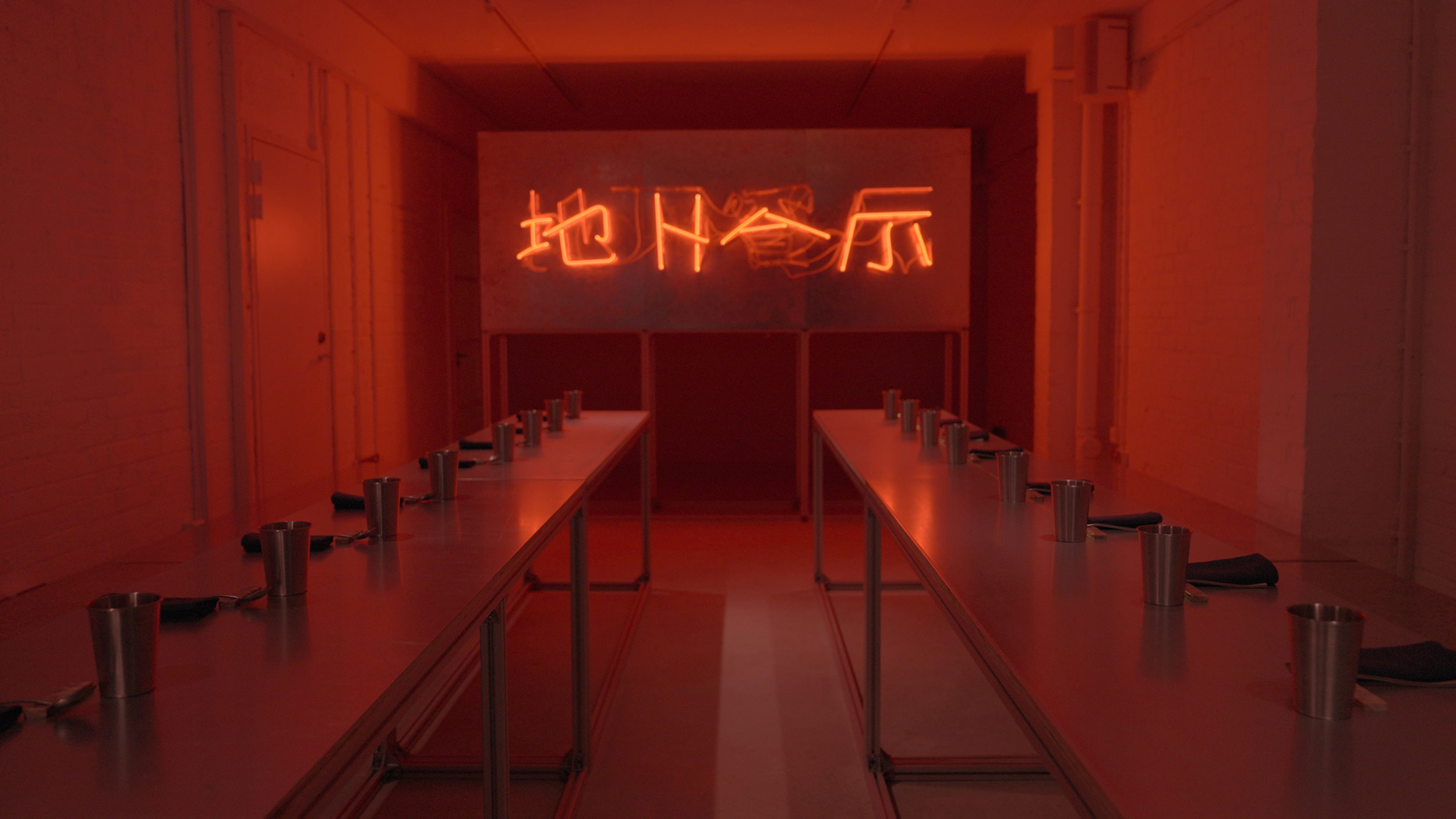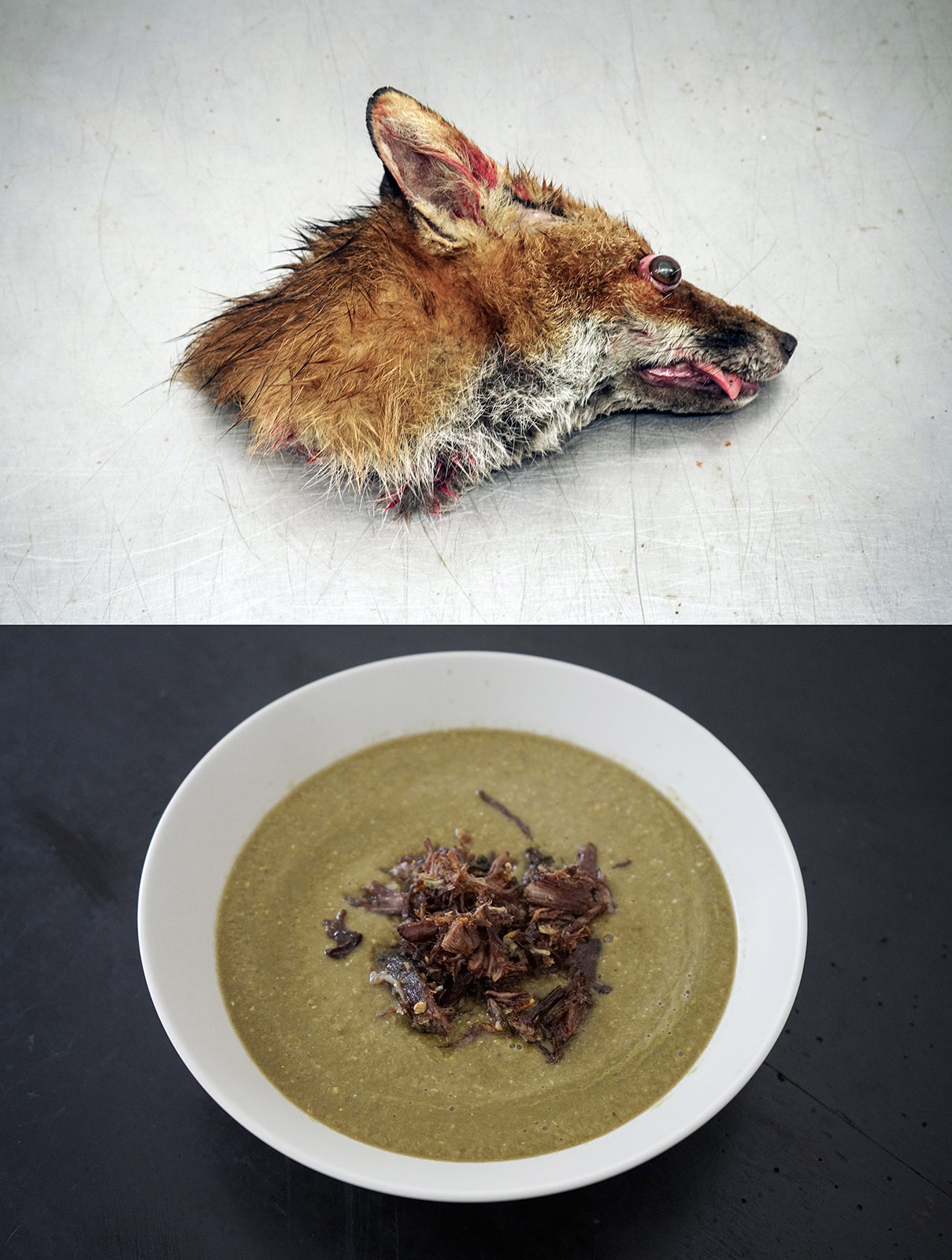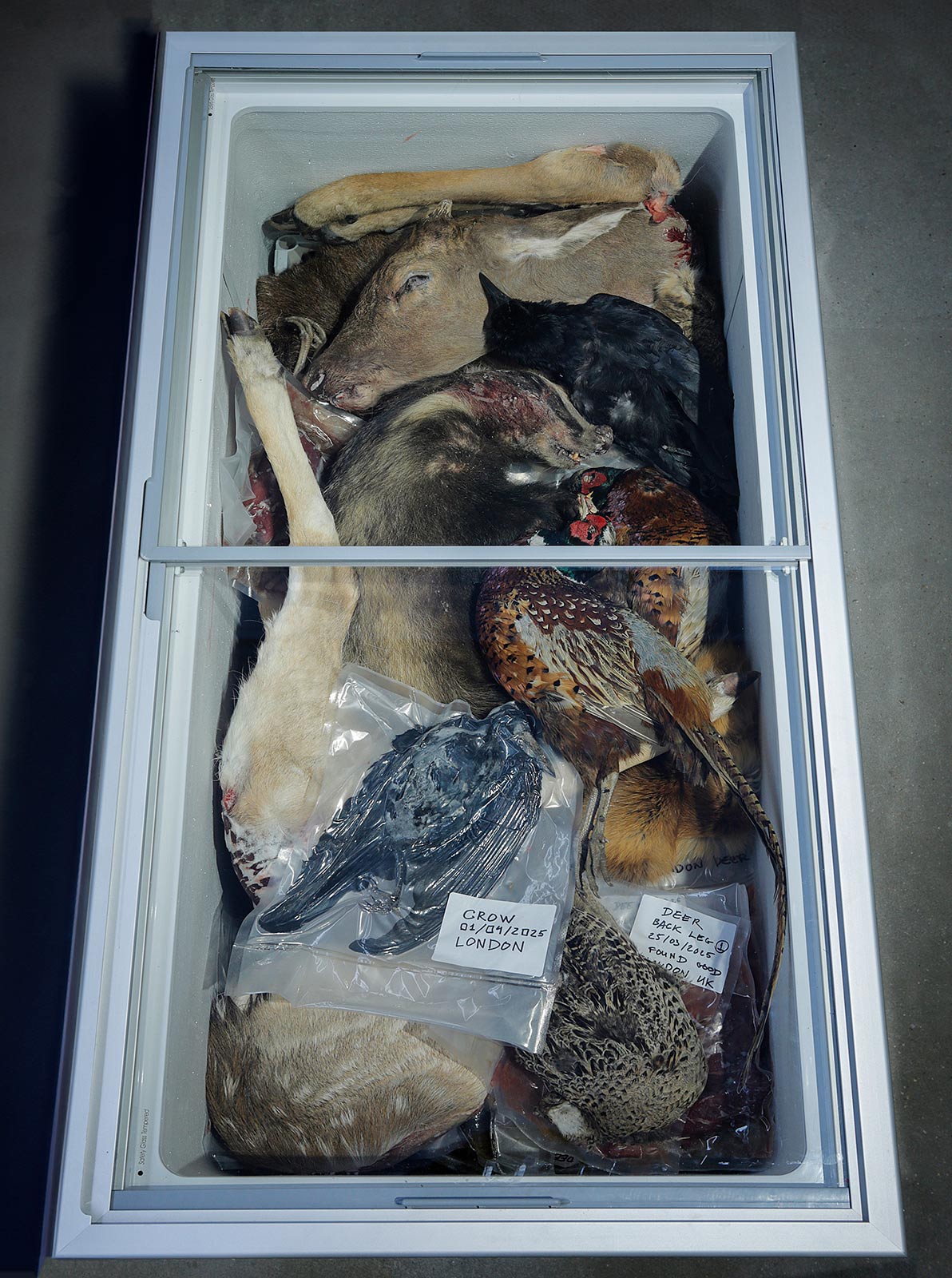For the opening dinner of 'KHAM: The Road’, the artist’s latest exhibition at London gallery A/Political, scavenged carcasses make a Michelin-star menu by chef Masayoshi Haraguchi
When the artist Petr Davydtchenko is asked why he eats roadkill—he lived exclusively off scavenged animal carcasses from 2016 to 2019—he relates his atypical relationship with food back to his childhood. He grew up poor; his mother and father were painters. When playing in the local area, the closed military town of Arzamas-16, Russia, he noticed rats stealing candy from a local factory. He didn’t eat the rats, that would happen later in life when he was cohabiting with urban scavengers in the catacombs of Paris, and for an art project where an infestation prevented children from accessing a playground in Cologne. Instead, the rats left some candies behind as they scurried around—he ate what he found. It was a rare luxury.
Over the years, he researched more about rats, once explaining to a curator: “They are very smart and social creatures that take care of each other.” He learned about how they would share food and ensure that every rat in the pack had enough to eat. The anti-capitalist critique and strong social conscience is easy to discern from his thinking—discarded meat is not simply a sign of waste, excess and taboo, but a provocative way to make people think about the fragility of life, the arbitrariness of value, and what it might look like to reimagine how we live.
Davydtchenko’s latest exhibition, KHAM: The Road, running until 25 April at A/Political in London, continues his recent efforts from a previous underground restaurant in Hong Kong to present an elevated version of roadkill. Described as a ‘gastronomic experience’, the exhibition—that includes photography and animal carcasses—opened with a dinner from chef Masayoshi Haraguchi, the former Executive Chef of Michelin-starred restaurant Dominique Bouchet. Instead of shock or survival, Davydtchenko is framing this food through the lens of haute cuisine and luxury.
At the inaugural dinner last Friday, before anything was eaten or drank, guests signed a waiver about consuming ‘non-commercial’ food. Once the legal formalities were completed, the menu began with a welcome drink of “bloody” beetroot blackcurrant, infused with gin, followed by a roadkill consommé—a semi-clear, jelly-like dish of seasoned broth with a white bean cream. The second and third courses had an Asian influence: a Beijing-style roasted pheasant, flavoured with steamed rabbit shumai and a honey mustard sauce. Both the fourth and fifth courses served deer: first a kebab-style ball of deer meat on a bone with walnut sauce, then a medium-rare fillet served in its own jus (The person I was seated next to couldn’t stomach the pink meat of the medium-rare fillet). The meal ended with a warm sake digestive, infused with animal fat. Artfully plated and paired with good wine, the meal was notably elevated in presentation and selection; this was intentional.
“I’ve never seen a gallery that looked so much like an abattoir before”
You wouldn’t know from the taste that Davydtchenko had found the meat on the streets of London only a few days, or weeks, ago. During the meal, we asked him to explain the process of sourcing the animals. I’ve lived in London for nearly a decade, and can count on one hand how much roadkill I’ve seen (none were pheasant, rabbit or deer). But it is on the edges of the city—by its motorways, in its parks and woodland—that he would scour over several days to find enough for the dinner. In the relatively milder climate of the UK, there’s more leeway for how long the carcasses can be by the roadside, a few days or up to a week even. In hotter weather, that window of opportunity tightens to a few hours before the meat spoils. And having developed a reputation, people let him know through word of mouth and over social media.
Beyond the culinary experience, the installation in KHAM: The Road presents two photographs of the artist—close-ups of body parts, an arm and the back of his head—that show his tattooed skin. A second person in the image wears gloves and holds up a ruler to him, as if preparing his body like a piece of meat. Animal carcasses are laid out in the gallery: a badger, a deer head, a leg, a pheasant, a crow. Some are stored in a freezer, bagged with the date and location they were found, while another three skins are laid out on a low-lying metal slab, as if precious objects from an unnamed ritual. And accompanying the exhibition is the launch of an unconventional recipe book by Davydtchenko, published in Baron Book’s Death Book series. It follows his wider journey with off-grid living and alternative means of survival, presenting a collection of archival material, photographs, diary extracts, and recipes.
All the bodies present in the exhibition, whether on a plate or the faux-pedestal of the freezer, whether human or animal, living or dead, are being displayed and observed, striking an ambiguous line between the mundanity of food storage and the intricacies of culture. I’ve never seen a gallery that looked so much like an abattoir before.
Davydtchenko is breaking many different kinds of taboos by presenting roadkill as food—not only because it’s seen as low value and dangerous to consume, but also because the cultural rituals around meat, around food, always speak to wider structures of society. There is a lot of trust given when you eat food from someone else—you’re ingesting something that can make you sick or potentially kill you. Food is often eaten together and reinforces social bonds, such as private family dinners or during wider public festivals. The sourcing and preparation of food speaks to the value we place on ourselves and those around us. Beyond the novelty of being served roadkill, the shock aesthetics of taboo breaking, Davydtchenko’s gesture invites a thoughtful reconsideration of how resources are organised and distributed—suggesting we might live in radically different ways, if only we make the choice.

















